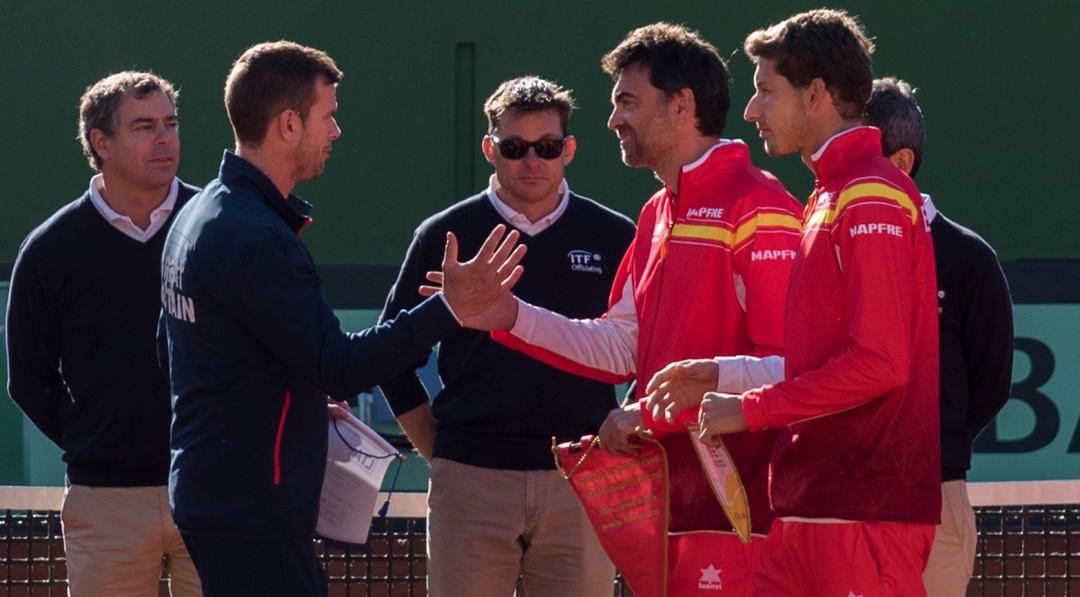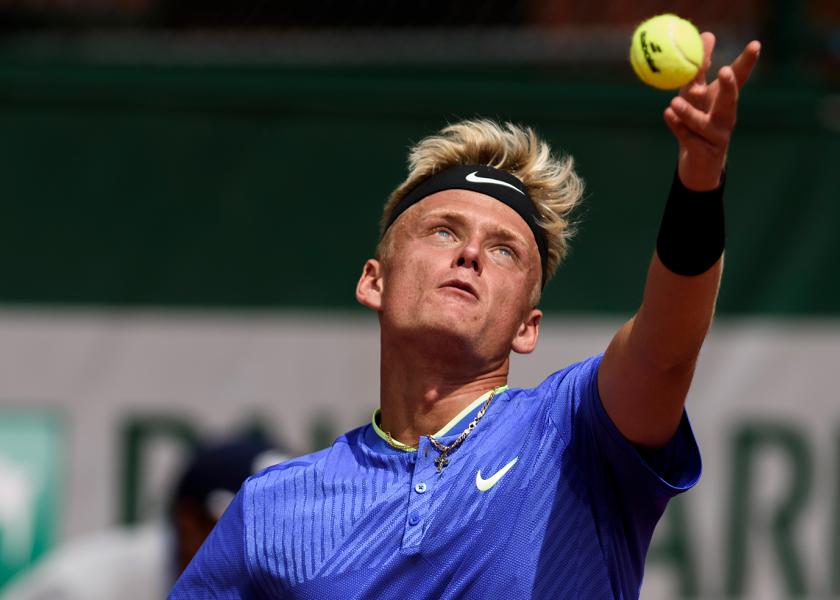Sergi Bruguera
Spain’s Rudder for the Davis Cup

He chose tennis as a way of life. Perhaps he didn’t know it the first time he picked up a racket, but when Sergi Bruguera hit his first ball, his talent for the sport became obvious. Now, as Spain captain for the Davis Cup, the great standard bearer of Spanish tennis in the nineties looks at his successful past and, above all, the present and future of this sport in our country.
No one doubts that Nadal is the flagship of this year’s Spanish Davis Cup team, nor would anyone question that, with Bautista, Carreño, Feliciano, and Granollers, the rest of the team warrant maximum result. It’s a selection shaped by Sergi Bruguera (Barcelona, 1971), current captain of the national team, who is taking command of the armada with great optimism, in order to guide it to a new Salad Bowl, as the Spanish fondly call the Davis Cup. “We have a very good team with a lot of personality, which makes me feel quite positive.” Still, “it will be a very difficult tournament, because we’ll be playing on an indoor hard court.”
The new Davis Cup, which this year will be played between 18 and 24 November in Madrid (as the sole host city), is sparking controversy because of its new format. From this year on, there will be 18 nations in the final phase of this legendary competition, into six groups of three teams, playing fewer (two singles and one doubles) and shorter matches (three sets instead of five). “I find it very attractive to see all the best players from each country competing in the same week. What I like most is that, in this format, there are many possibilities to see the numbers one of each country.” However, the Catalan also admits that, as with all changes, “it will take some getting used to at first.” Plus, there is another obstacle for the Spanish team: they are in the same group as Croatia, the current champions, and Russia. As far as the coach is concerned, “the toughest group, and it’s perfectly possible the eventual winner is in it, without ruling out other very competitive teams, such as France or Serbia.
“Not being able to play on clay is a disadvantage for us. Fortunately, I have a very broad team with some great players”
Another novelty in the new Davis Cup edition is the surface, which is no longer chosen by the host country. “Not being able to play on clay is a disadvantage for us. An indoor hard court is the worst surface for us, and a very important handicap.” Still, not competing on clay, where Spain is the hegemonic power, does not discourage the captain, nor his pupils, in the least. “Fortunately, I have a very broad team with some great players,” Bruguera says. Furthermore, he notes that one of the notable differences with his playing days is that “these days, all surfaces are practically the same because of the players’ style.”
Tennis from the court and from the bench
Bruguera himself was one of the many Spanish talents forged on clay. Conquering the clay in Paris two years in a row, in 1993 and 1994, ended an 18-year drought during which not one Spanish tennis player won Roland Garros. Now, as coach and captain, the eyes through which he’s seeing the game is very different. “You can’t compare the perspective you have as a captain with that of a player. From the outside, it’s easier to analyse and see what is happening, but not being on the court, my margin of action is much smaller. I can never do as much as the player,” he says.

Sergi Bruguera has been captaining the Spanish tennis team since 2018. © RFET
The challenges he faces as a coach are also different. No longer is he returning high-speed serves or sprinting to the net to save a let but thinking about strategies for a sport that has evolved dramatically in the last decades. “Right now, there are players who are two meters tall who move like they’re 1.80. Then there is the luck factor and, at the same time, the problem of having to put together a team, which involves leaving out some very valid players I would love to include,” he says.
The heirs of the present generation
With his two Grand Slam titles, as well as another place in the final in Paris and a runner-up at the Olympic Games in Atlanta, the young man with his nineties rockstar hair reopened the door for the many Spanish tennis players who have been collecting trophies for our country ever since. He has also been able to teach or help some of those players from the bench, drawing from his own experience. “Having Ferrer in the national team has been an incredible luxury for Spanish tennis. On the other hand, Nadal is, for me, the best player in history, and I don’t think anyone can get near him.
“There are very good players who have great potential to bring us a lot of joy in the future”
And after them, who? Ferrero, Arancha Sánchez-Vicario, Moyá, Garbiñe Muguruza, Nadal… Over the past 30 years, names like these have been taking the baton once carried by Bruguera. However, with most of the current generation being over thirty, many people are asking the question. “I think it would be a serious mistake to compare the new breed of Spanish tennis players with Rafa or the others. What I do believe is that there are very good players who have great potential to bring us a lot of joy in the future,” he responds. The captain has spoken.



